The Manatees of the Crystal River by Don Silcock
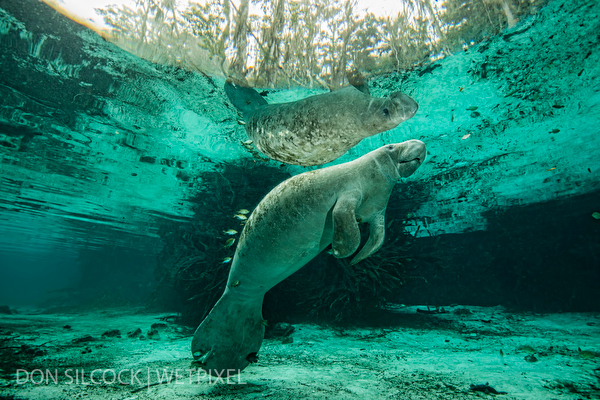
The Manatees of the Crystal River by Don Silcock
A winters dawn is a special time of the day to be out on Kings Bay and watch the first rays of the Florida sun appear over the horizon as they light up the soft mist rising from the warm waters of the bay.
The mist creates an ethereal, almost mystical, feeling and if you listen carefully and you will hear the gentle ripples from the swirl pools formed by the paddle-like tales of the Sirenians making their way towards the fresh-water springs that are the source of the Crystal River.
Look closely into the dark waters ahead of those swirl pools and you will see the large and unmistakeable sausage-like shape of the Florida Manatee.
The arrival of the manatees usually coincides with a rising tide and heralds their return from feeding on the sea grass of Kings Bay and the Crystal River. Cold and tired, they need the warmth of the spring waters to restore their body temperature as they sleep in the natural and man-made refuges of the area.
This area of the Florida peninsular in Citrus County, on the western side of the state that is bordered by the Gulf of Mexico, is without doubt the best place in the world to experience the unique and singularly exceptional Florida Manatee.
Warm Water…
The peninsular that makes up most of the state of Florida is formed by a large plateau of karst limestone that sits on a massive subterranean platform of bedrock which stretches far out in to the Gulf of Mexico.
Underneath all of Florida and the southern parts of Alabama, Georgia and South Carolina is one of the world’s most productive aquifers - the massive Floridan Aquifer, which covers a total area of almost 100,000 square miles. Instead of running off into river systems, the porous karst limestone allows the state’s regular and heavy rainfall to percolate down in to the many underground chambers of the plateau and, as new water makes its way in to the aquifer system, hydraulic pressure forces previous rainfall out in areas where those chambers are closest to the surface - such as Kings Bay in Citrus County.
In an area covering about 1 square mile, Kings Bay has over 70 natural springs which pump out some 300 million gallons a day, all at a constant temperature of 72 deg F, filling the bay with warm water and forming the head waters of the Crystal River which flows out in to the Gulf of Mexico.
This constant flow of warm water is the reason why the manatees come to Crystal River every winter.
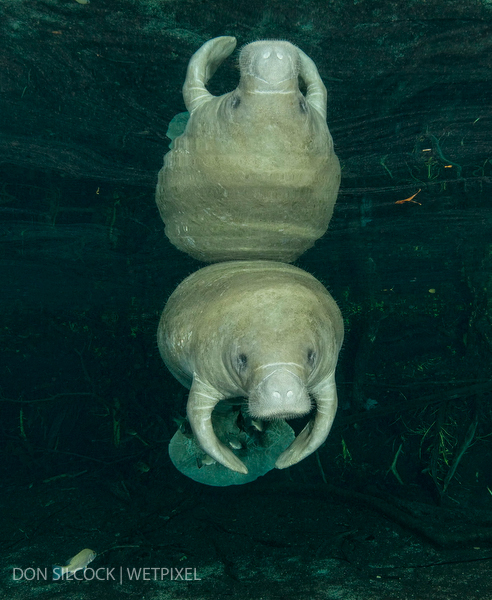
The Florida Manatee
Said to be the source of the mermaid myth, Sirenians are large mammals with stout bodies which look a bit like a small whale.

Their considerable size – a fully grown female manatee can reach 4m in length and about 1500kg - means they have evolved without any natural enemies and have developed a rather slow and passive nature. They get their name from “sirens”, the ancient term used to describe the sea nymphs whose captivating songs are said to have lured sailors to their deaths in treacherous shallow waters. Distantly related to elephants, but usually referred to as “sea-cows”, there are now only four species of sirenians still alive of the 35 that are known to have once existed - three of which fall in to the Manatee family, while the fourth is in the Dugong family.

Solitary creatures that can live more than 70 years, manatees are the only aquatic mammal that is also an herbivore and they exist on a primary diet of sea grass, the pursuit of which consumes up to 8 hours a day, with a full grown adult consuming up to 10% of its body weight every day.
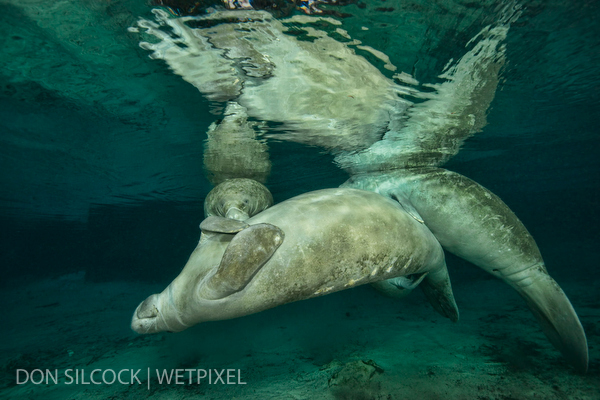
Contrary to what its rotund appearance might suggest, the manatee’s diet means that it is actually a really “lean machine” with virtually no fat or blubber to keep it warm when the water temperature drops in winter.
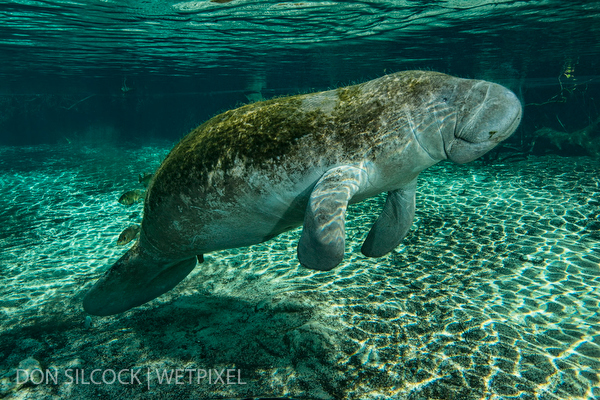
At water temperatures below 68°F (20° C) the Florida Manatee simply cannot maintain its core body temperature and will die of cold stress unless it can find a source of warmth, which means that Kings Bay and its natural springs provide a perfect natural refuge for them.
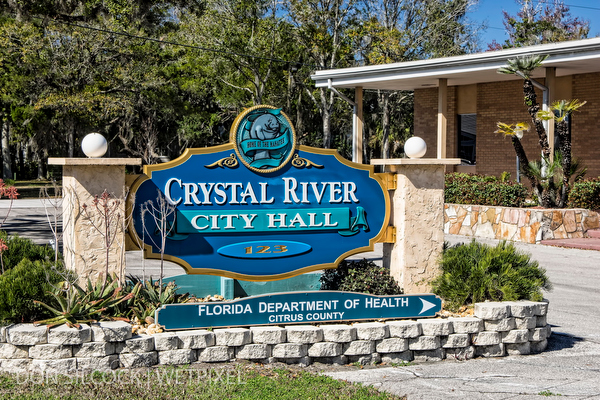
Crystal River – Home of the Florida Manatee…
There are actually two Crystal Rivers – the river itself and the town of the same name that sits on the shores of the 400-acre lake that is Kings Bay.
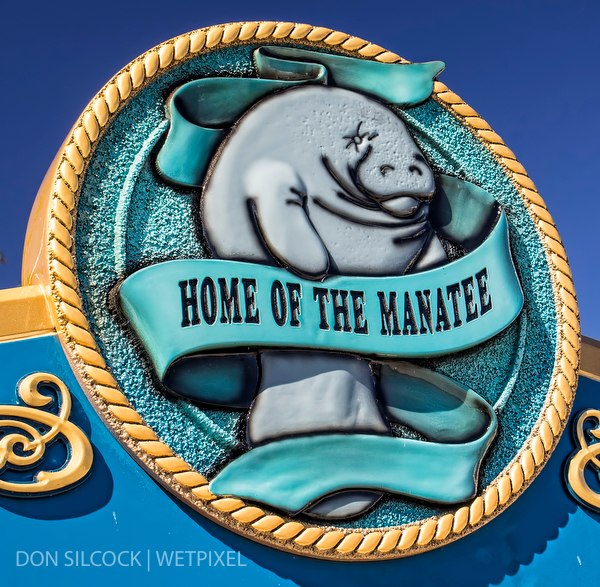
First impressions are not always what they might appear, and such is the case with the town of Crystal River where the sign outside of City Hall proudly informs you that you are now in the “home of the manatee”.
With a population of just over 3000, Crystal River gives the first-time visitor a feeling of small-town America doing OK - thank you very much… There are numerous hotels and restaurants, plus a large shopping mall and the area around Kings Bay hosts numerous very nice canal-side homes. This prosperity derives from two very different sources, the estimated 150,000 people who come to experience the manatees every winter, injecting somewhere between $20m and $30m in to the local economy.
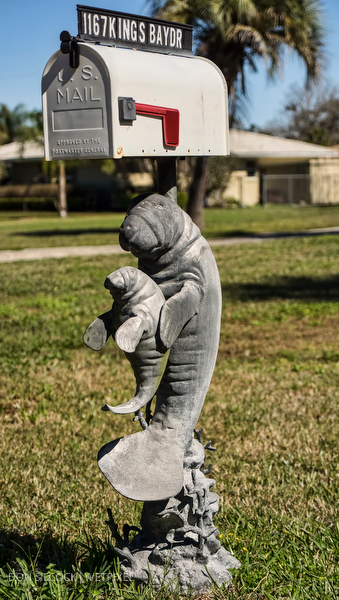
Then there are the “snowbirds”… wealthy residents of the north-east American states and Canada who migrate south in the winter months to escape their harsh weather for Florida’s much warmer southern version.
Peel the Crystal River onion however and you will find a lot of lingering resentment amongst both local residents and snowbirds towards the manatee because of the boating speed and access restrictions in place under both State and Federal law to protect them.
Their basic argument is that manatees have been formally classified as “endangered” under Federal law since 1967, which was probably justified at the time, but the protection mechanisms have worked so it is time to move the status to “threatened” and relax the restrictions which impact heavily on the local boating community.
Resident groups such as Save Crystal River point to the increasing numbers of manatees in Kings Bay which are up from 124 when aerial surveys first began in 1983, to 706 in February 2015, as the rationale for the change. Manatee advocacy groups like the Save the Manatee Club have equally strong, but diametrically opposed views, arguing for stronger protection and making the main Three Sisters Spring a closed sanctuary.
Their basic argument being that there is still a long way to go before any status change can be considered, pointing to the loss of 830 manatees state-wide in 2013 because of unusually cold winter weather and pollution induced red tides. Protecting the Florida Manatee…

The unique nature of the manatee has long been recognized in Florida, with the first state protections against killing or mistreating them enacted in 1893. In 1978 the entire state became a formal manatee sanctuary and 13 critical winter aggregation areas were established – all with enforceable access restrictions and marine craft speed limits.
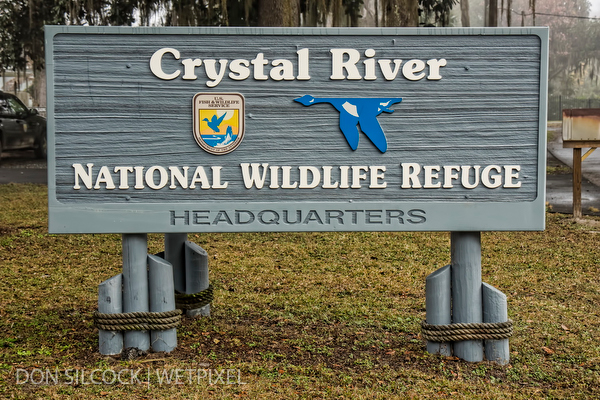
Manatees prefer shallow water, swim slowly and because they are mammals they must surface regularly to breathe - which puts them right in the danger zone where water craft are involved. For most of the year that danger is relatively small, as they roam far and wide in search of the sea-grass that sustains them - so the chances of being hit are minimal, but in winter when they aggregate in refuges like Kings Bay they are incredibly vulnerable.
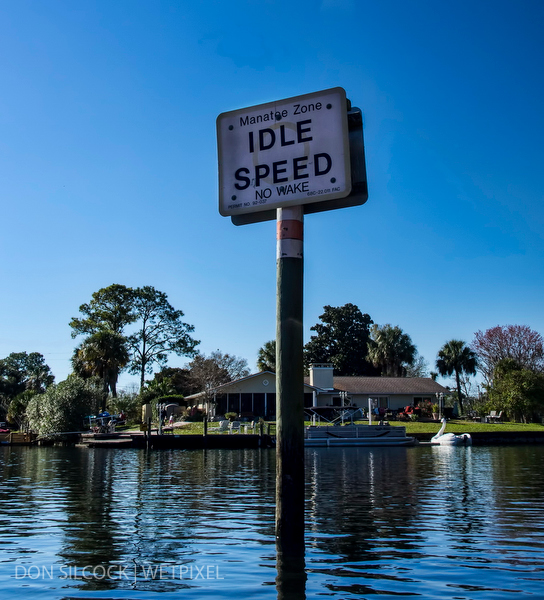
Possibly the single biggest life-style attraction in Florida is the “life-aquatic” and boating in general is extremely popular in the state. The no-go access restrictions and refuge speed limits are like red rags to a bull for those who argue that the manatee conservation pendulum has swung too far.
The conservationists counter that such restrictions are essential if the unique manatee is to prosper and survive.
Swimming with the Florida Manatee – Only in Crystal River
Crystal River is the only location in the United States where tourists are allowed to enter the water and have a degree of interaction with the manatees. Basically it is an anachronism that dates to before the 1966 Endangered Species Act, swimming with the manatees was always a popular tourist drawcard in Crystal River and was “grandfathered” through the legislation – something that would never be permitted if it were proposed today.
But back then the numbers of tourists swimming with the manatees were a mere fraction of the estimated 150,000 who did it in 2015 and Crystal River was certainly not the hot location it is today.
Add to that Crystal River’s appearance in the book 1,000 Places to See Before You Die and it is easy to see how tourist numbers could top 200,000 in the next few years!

The Three Sisters
This set of three large springs is set in 58 acres of pristine vegetation, in what is now a wildlife refuge, and is probably the most unique and inspiring place you could imagine to see and truly appreciate the Florida manatee. Unlike the other main springs in Kings Bay the setting of the Three Sisters means that the crystal clear waters that emerge from the underground aquifers do not merge with the darker waters of the bay until they exit the refuge.
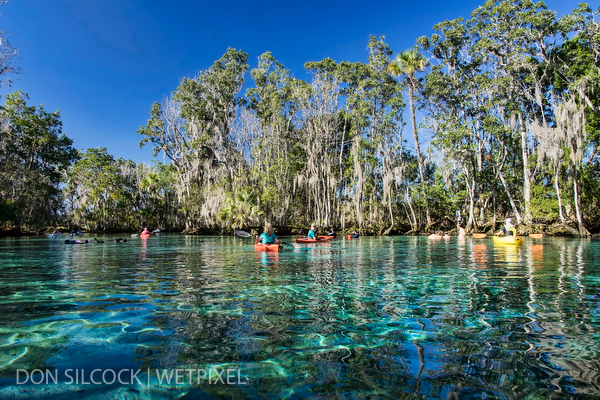
Which means that in the right conditions the visibility is absolutely stunning creating a magnificent backdrop to those manatees that enter the Three Sisters through the narrow channel that connects it with the nearby canal system and Kings Bay itself.
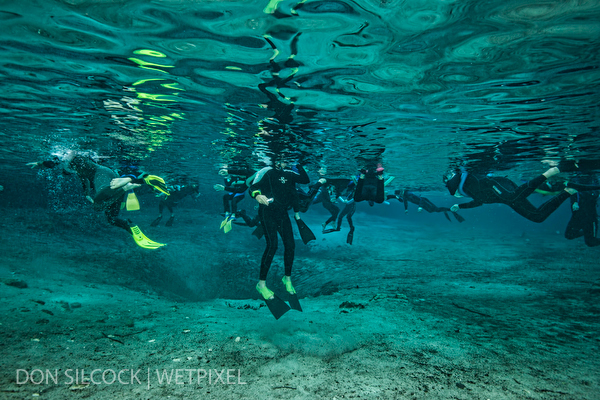
However… it is also open to the public and what can seem like a unique and tranquil haven if you are there alone, quickly turns in to thriving mass of assorted legs and torsos suspended from flotation sausages as the next party of tourists arrive.
Very few tourists know how to snorkel and so they end up kicking madly to stay afloat, which rapidly stirs up the sandy bottom and sends the manatees to the deeper parts of the spring in search of some peace and quiet.
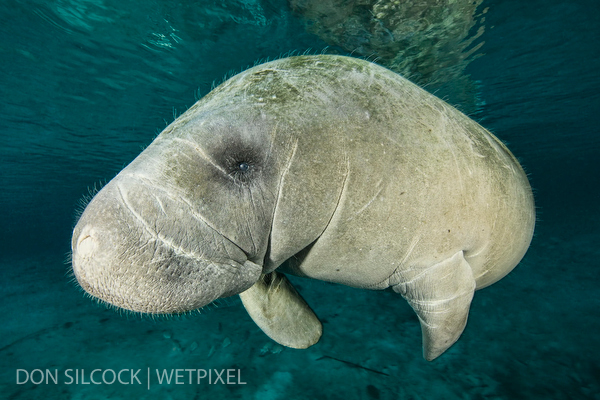
The tidal nature of Kings Bay means that the water height in the Three Sisters also varies with the tides – something that the manatees can sense through their vibrissae, the incredibly sensitive facial and body hair believed to give them a kind of three-dimensional spatial and navigational awareness.
One of the most interesting experiences I had during the 10 days I spent in Crystal River was early one morning at the entrance of the narrow channel that provides access in to the Three Sisters Spring. Entrance to the Three Sisters is not allowed before 07.00, which that morning coincided with more or less the low tide and as I entered the water and made my way towards the channel I realized that I was surrounded by several large manatees that were all waiting patiently for the water level to rise.It was really quite something to be surrounded by 3-4m meter long animals who seemed either oblivious (hard to believe given their vibrissae…) or accommodating of my presence! Then I realized that in all probability the manatees were simply cold and were enjoying the warmth of the water coming out of the Three Sisters!
The Manatee – A Personal Observation…
For me, an opportunity to interact and photograph large marine creatures is as good as it gets – they grace you with their presence, are in charge of the agenda and I find the actual experience utterly inspiring!
The manatees of the Crystal River was just something I had to do, even though it involved traveling two-thirds of the way around the world, but I have to say that I left Crystal River with a degree of ambivalence.
On the one hand I loved the manatees – I mean how could you not? They are big, cute and wonderfully photogenic plus, if you can get time alone with one in the Three Sisters, the experience is just spectacular. However, I was just not comfortable with the way Crystal River has so commercialised them and if they really are one of the thousand things to see before you die - then it can only get worse.
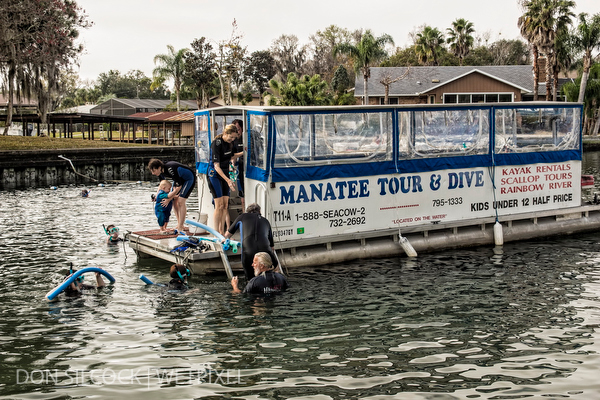
My overall sense of things was that everything that could be done was being done to minimize stress on the manatees – the Fish and Wildlife Service seem to have good systems in place to monitor the overall situation. The tour operators seem to really know what they are doing and follow the rules (well certainly mine, Birds Underwater did) plus the extensive number of Manatee Watch volunteer wardens do a great job.
I felt incredibly fortunate to have had some close personal contact with a few of those manatees that use the Three Sisters. This was always on their terms though, where they came to me and allowed me to photograph them!
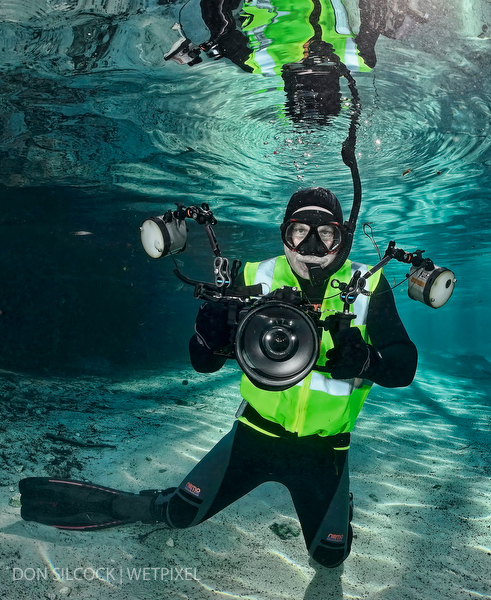
The rules of engagement from the Fish and Wildlife Services for “professional photographers” is that after you have watched an instructional video on how to behave and paid a fee, you are given bright vest with a number on and are allowed to submerge rather than stay on the surface like all the other tourists.
You are not allowed to pursue the manatees, under any circumstances, so you have to hold your breath and hope they come to you, but when that happens it really is a special moment that can only really last until your desire to breath overcomes your desire to cherish it!
What troubled me about the Crystal River was the difference between those incredible moments of intimate interaction and what happens when hordes of tourists arrive eager to spend an hour or so in the water and then go home and tell friends, “I touched a manatee.”
Don Silcock
For more information and insight on these wonderful creatures, the proposed changes to the Three Sisters Springs and the current status check out Don’s Complete Guide to the Crystal River Manatees…
Don’s website www.indopacificimages.com has extensive location guides, articles and images on some of the best diving locations in the Indo-Pacific region.